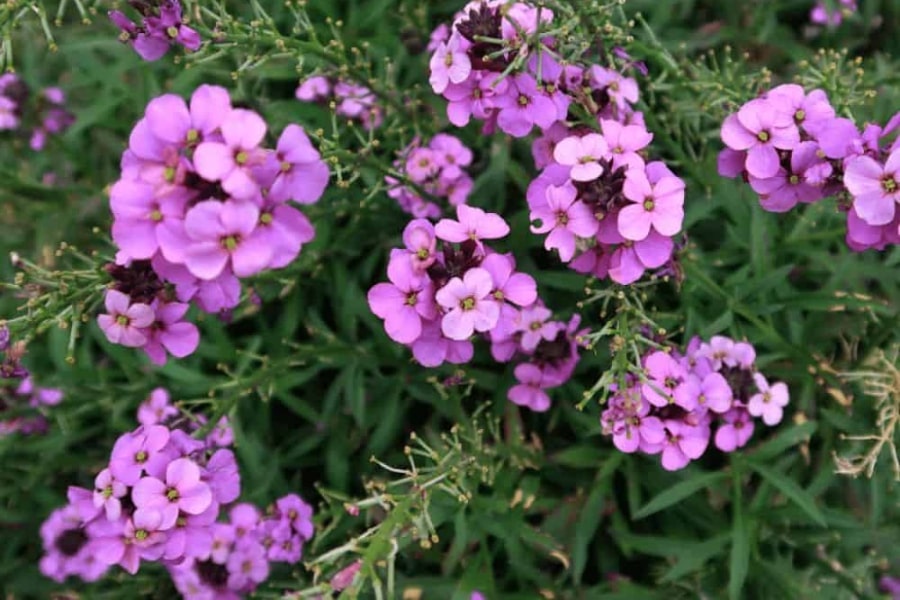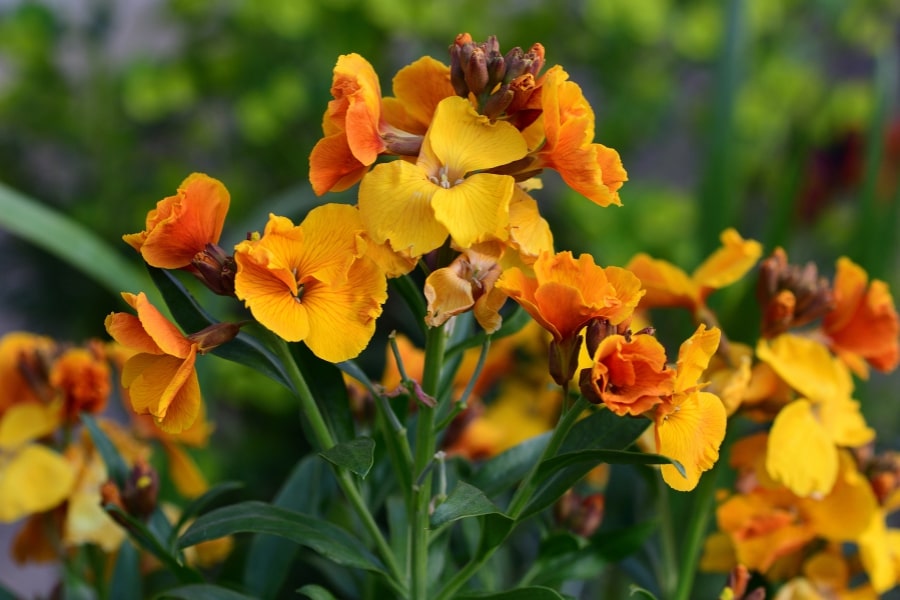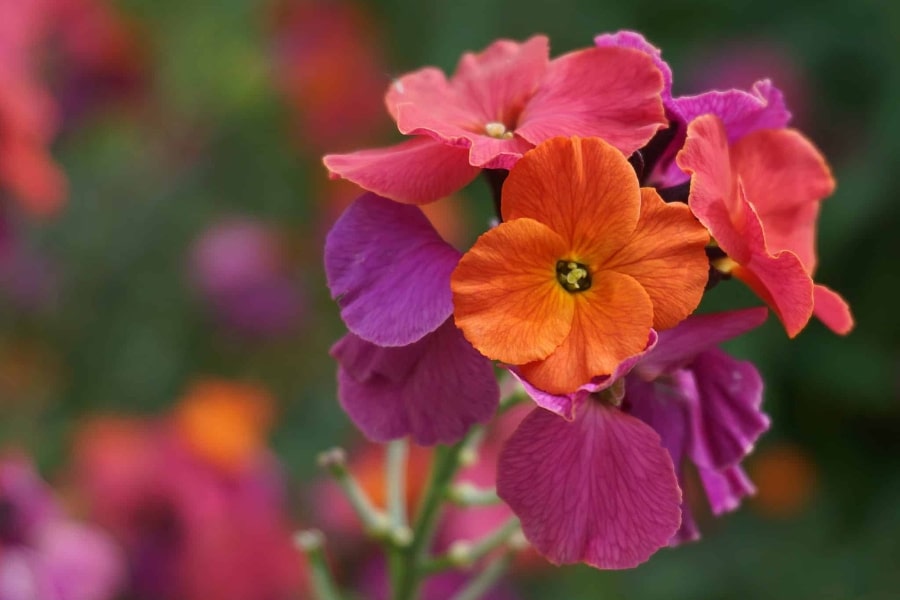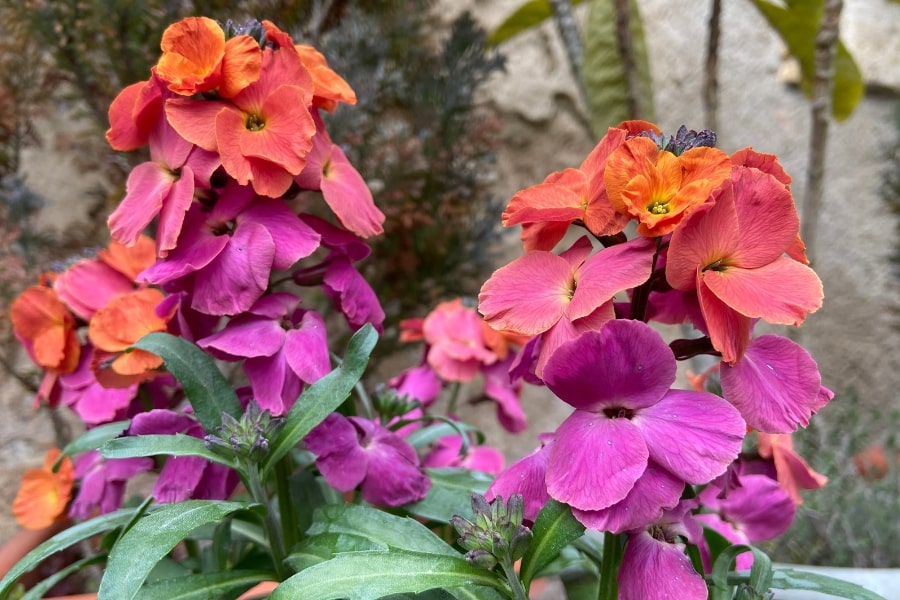Erysimum, commonly known as Wallflower, is a genus of flowering plants that belongs to the Brassicaceae family. Depending on the species and climate, Wallflowers can be grown as annuals, biennials, or perennials. Wallflowers are prized for their showy flowers and easy-to-grow nature. They produce clusters of brightly colored blooms in shades of yellow, orange, pink, purple, and red, often with a delightful fragrance that attracts pollinators like bees and butterflies. Thriving in well-drained soil and full sun, these hardy plants are a favorite in cottage gardens, borders, and rock gardens.

Our Selection of Erysimum
At Martin Garden Center, we tend to have a very limited selection of Erysimum in in the Fall, so get them when you can or miss out. They are evergreen and bloom throughout the Winter in warmer climates such as along the SC coast and sometimes in a mild Upstate Winter. Popular varieties include Winter Orchid and Winter Passion, which provide stunning purple hued flowers.
Growing and Caring For Erysimum
Erysimum thrives in well-drained soil and full sunlight. Plant them in an area that receives at least six hours of sunlight daily, preferably in a location sheltered from strong winds. Well-draining soil is essential to prevent waterlogging, as Erysimum is susceptible to root rot in overly wet conditions. These plants adapt to various soil types but prefer a slightly alkaline to neutral pH. Before planting, enrich the soil with organic matter to enhance fertility.
When planting wallflowers, it’s essential to space them adequately to allow proper air circulation and prevent overcrowding. Dig a hole slightly larger than the root ball and place the plant at the same depth it was in the container. Backfill the hole with soil, gently firm it around the plant and thoroughly water it. Planting can be done in either spring or fall, with fall planting allowing the roots to establish before the following spring’s growth.
Erysimum plants prefer moderate watering, especially during dry spells. Once established, they exhibit good drought tolerance, making them suitable for water-wise gardens. However, consistent moisture during the growing season promotes healthier growth and more abundant blooms. Fertilize Erysimum in early spring with a balanced, slow-release fertilizer to provide essential nutrients for the upcoming growing season. Avoid excessive fertilization, as wallflowers are not heavy feeders, and too much fertilizer can lead to leggy growth.
Regular pruning and deadheading are essential for maintaining compact and vigorous Erysimum plants. Deadheading encourages continuous blooming and prevents the plant from putting energy into seed production. Additionally, trimming the plants after the first flush of blooms helps maintain a tidy appearance and can stimulate a second round of flowering. A more extensive pruning in late winter or early spring in colder climates can rejuvenate the plants and promote bushier growth.
Erysimum plants are generally resistant to pests and diseases, but like any garden plant, they may encounter issues under certain conditions. Aphids can occasionally be a concern, especially during periods of new growth. Regular inspection and applying insecticidal soap can help keep aphid populations in check. Ensuring proper air circulation by avoiding overcrowding and providing well-drained soil minimizes the risk of fungal diseases.

Leaves and Flowers
Wallflower leaves are typically lance-shaped or linear, forming compact rosettes near the ground. Their colors span a spectrum from vibrant green to grayish-blue, and some varieties boast variegated patterns.
The flowers are usually small, but they grow in large clusters that can create a stunning display. Characterized by their four-petaled arrangement, these blossoms vary from soft pastels to bold, fiery oranges and reds. Their delicate appearance belies their tough nature; these blooms endure even in challenging conditions, earning the wallflower its reputation as a symbol of endurance and fidelity.

Uses in the Garden
Erysimum’s compact growth habit makes it an excellent choice for defining borders and edges in flower beds. The rich colors of its flowers can create a captivating frame that transitions smoothly between different plant varieties. In addition, Erysimum’s resilience and ability to thrive in well-drained, rocky soils make it a natural fit for rock gardens.
Erysimum can thrive in containers and pots for those with limited garden space. Mix and match different cultivars to create stunning arrangements that bring color and fragrance to balconies, patios, and other small spaces. The wallflower’s blossoms can also enhance outdoor spaces and make exquisite cut flowers for indoor arrangements. Their unique form and vibrant colors add a touch of elegance to any vase.

Frequently Asked Questions
Is Erysimum A Perennial?
Erysimum includes both perennial and biennial species. The specific longevity of an Erysimum plant depends on the species or cultivar. Some wallflowers are perennials, typically flowering each year after their establishment. These perennial Erysimum varieties often maintain their evergreen foliage throughout the year. On the other hand, certain Erysimum species are biennial. Biennials complete their life cycle within two years, typically flowering in the second year of growth before setting seed and completing their life cycle.
Is Erysimum Deer Resistant?
Wallflowers have a distinctive, strong fragrance that is generally unappealing to deer. While no plant can be guaranteed to be entirely deer-proof, Erysimum is not a primary choice for deer.
Is Erysimum Poisonous To Cats and Dogs?
These plants are not listed among the common poisonous plants that pose a threat to cats and dogs. However, individual animals may react differently to plants, and some may have sensitivities or allergies.
